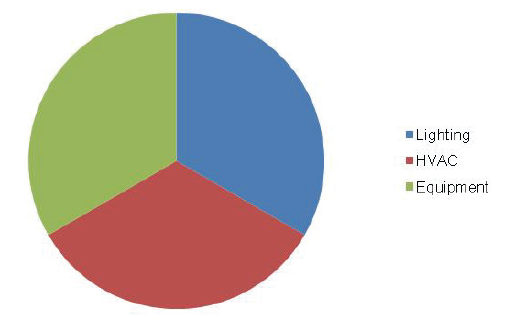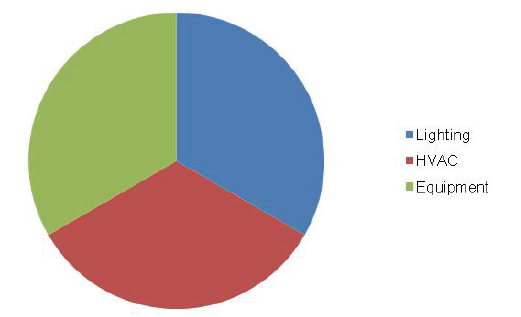The Government is encouraging consumers to reduce energy consumption due to the likelihood of increasing energy prices, increased strain on the power network and the possibility of reduced security of energy supply.
Government organisations signed up to the Govt3 programme must attempt to reduce their environmental impact over all areas of their operation, including energy use.
In June 2008, Cabinet directed public service departments to adopt, and specify in all contractual documentation, the use of passive solar design principles when designing new buildings from January 2009. This document offers passive solar design guidance to any user, though specifically targets Govt3 members to help them meet the Cabinet directive.
When first considering passive solar design, several questions are likely to arise:
-
what is it?
-
how does it work?
-
what are the benefits?
The aim of this document is to guide you along the path of passive solar design and help you make better design decisions for long-term performance of your building. It aims to provide a single, simple and easy-to-understand source of information covering the basic principles, and detailed design strategies that can be used to achieve them. Some of the design techniques discussed in this report are:
-
site, climate and building design
-
daylighting
-
shading
-
thermal mass
-
natural ventilation
-
window systems
-
computer simulation.
Also included in this guidance document are the costs and benefits of implementing passive solar design, a simple step-by-step checklist, and several case studies.
Using heat and light from the sun to maintain thermal and visual comfort in a building is fundamental to sustainable development. This free energy offsets the energy requirements of artificial lighting and conditioning systems. Currently, around 19 per cent of New Zealand’s electricity supply is used in commercial buildings (Ministry of Economic Development, 2006). The energy breakdown of commercial buildings varies widely across building types, though a rough rule of thumb is that the energy use can be broken down into thirds: one third for artificial lighting, one for heating, ventilation and air-conditioning (HVAC), and the remainder for tenant equipment such as computers, servers, copiers, and other small power loads (EECA, 2000).
Figure 1: Rough energy breakdown for a commercial office building


Using passive solar design principles can reduce, or possibly eliminate, a building’s requirement for artificial lighting or mechanical HVAC. As a result, this can significantly reduce the energy consumption for lighting and conditioning a building.
Buildings that use passive solar design and have a greater consideration of internal environmental performance tend to achieve higher comfort ratings during post-occupancy reviews. While a building without a mechanical HVAC system usually experiences a higher variation in internal temperature and humidity, the occupants have a higher forgiveness for conditions in a passive building that otherwise would be unacceptable in a fully-conditioned building. This leads to a greater acceptance of the building and satisfaction with its performance as a workplace environment.
Various studies have associated passive design strategies such as natural ventilation (high fresh air volumes), daylighting and increased comfort with increases in staff productivity (Commission for Architecture and the Built Environment, 2005, Allen et al, 2004 and Haynes et al, 2000). In post-occupancy reviews, sustainable buildings are typically rated more highly by their users than their air-conditioned counterparts (Leaman, 2001). Because salary costs, for even a small organisation, far outweigh other operational expenditures, a small increase in productivity can pay back a cost premium for sustainable design in a very short time. Because sustainable buildings are typically healthier, staff turnover and absenteeism are reduced in buildings using passive solar design (Allen et al, 2004 and Haynes et al, 2000).
The Property Council of Australia (2003) also highlighted several important benefits of passive solar and sustainable buildings. These were:
-
lower operating costs for energy, water and waste
-
higher levels of occupancy satisfaction, health and productivity
-
investors identifying with corporate environmental responsibility
-
marketing advantages due to the point of difference
-
a faster lease-up period
-
marginal increases in rental
-
higher tenant retention rates due to enhanced user satisfaction, health, comfort and productivity
-
higher loan value and lower equity requirements
-
higher building value on sale and appraisal
-
asset protection
-
overall greater return on investment.
Good passive design solutions rely on a complex interaction between several aspects of building design and building performance. While the following guidance contains different sections for different aspects of passive solar design, remember there will always be interdependencies across all areas of a building’s operational performance that need to be fully integrated for the final design to be successful. Design teams should use an integrated whole building design process, which helps identify these interdependencies and allows the design team to work out solutions for all criteria or potential opportunities and problems. You can download guidance on the integrated whole building design process from the Ministry for the Environment website.
This guidance document relates to passive solar design of commercial or institutional buildings only and was developed with these buildings in mind. Please see the further reading section for information about applying passive solar design to other building types.
The discussion in this document covers only passive systems; active design features such as solar hot water, photovoltaic panels or mechanical assisted ventilation have not been covered. For information on active solar systems, visit the websites of the Energy Efficiency and Conservation Authority and Solar Industries Association.
See more on...
2: Introduction
December 2008
© Ministry for the Environment